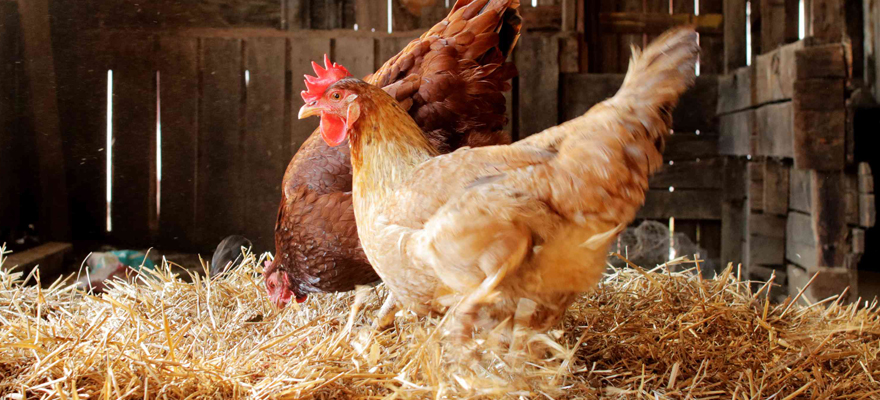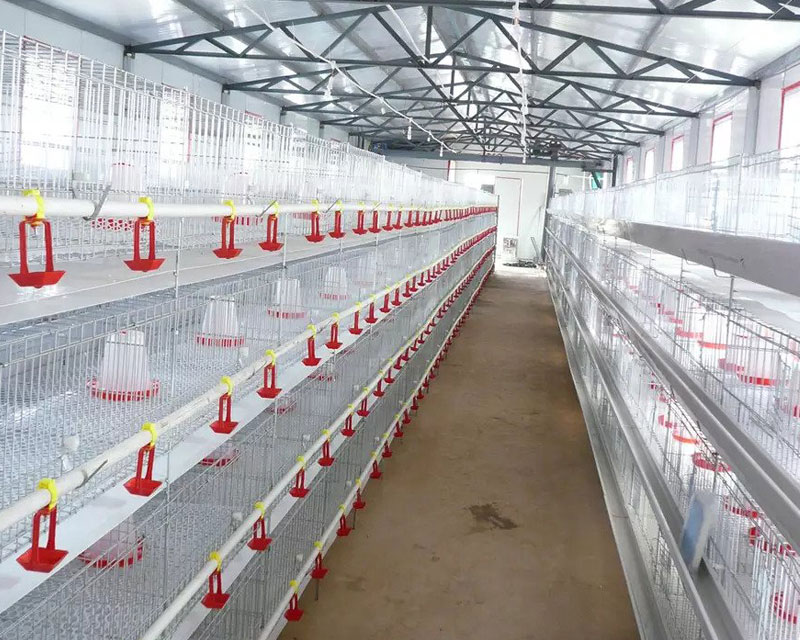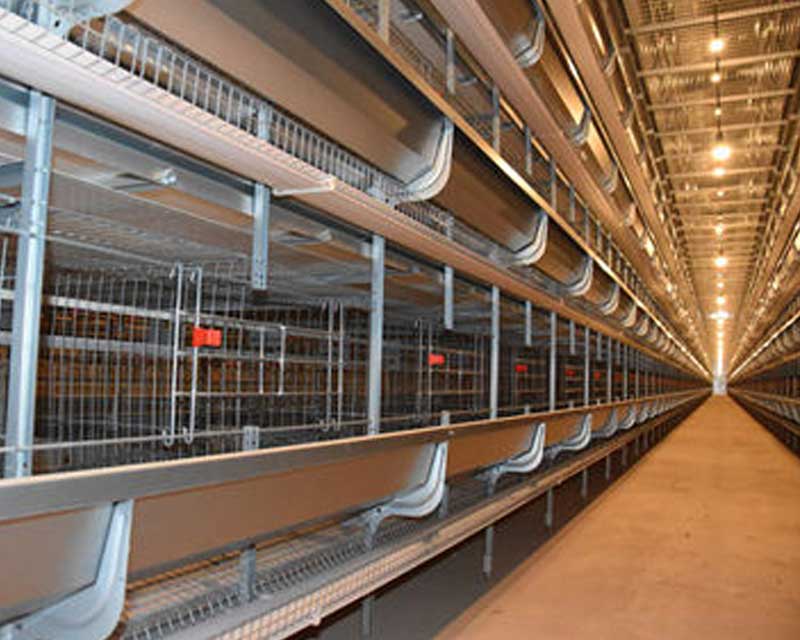What Is Deep Litter System?
Introduction
When it comes to animal husbandry, one of the most important aspects is waste management. Traditionally, animal waste was disposed of in various ways, including composting and spreading it on fields. However, these methods are not always efficient or cost-effective.

Enter the deep litter system, a popular method of managing animal waste that has gained popularity in cage free housing. In this article, we will take a deep dive into the deep litter system, exploring what it is, how it works, and its benefits. So, what is deep litter system?
What is Deep Litter System?
The deep litter system is a tried and tested method for managing animal waste that has been used for decades. Originally developed for use in the poultry industry, it has since been adapted for use with other animals such as pigs and cows.
The primary goal of the deep litter system is to create a warm, dry, and comfortable environment for the animals, while also reducing the amount of waste generated. This is achieved by allowing the waste to accumulate in a confined space over time, while periodically adding fresh bedding material on top.
One of the key advantages of the deep litter system is its cost-effectiveness. Traditional waste management methods such as daily cleaning and disinfecting can be time-consuming and expensive. The deep litter system, on the other hand, requires only periodic maintenance and minimal labor.
Another advantage of the deep litter system is that it provides a natural way to manage waste. The waste produced by the animals is broken down over time, creating a nutrient-rich fertilizer that can be used to fertilize crops. This can help to reduce the use of synthetic fertilizers, which can be expensive and have negative environmental impacts.
Furthermore, the deep litter system can also help to reduce odors associated with animal waste. As the waste is allowed to decompose slowly, it produces fewer odors than traditional waste management methods, which can be especially important for operations located near residential areas.
The deep litter system is not without its challenges, however. It requires careful management to ensure that the litter remains dry and does not become compacted, which can create an anaerobic environment that produces harmful gases. Additionally, proper ventilation is essential to prevent the buildup of harmful gases, such as ammonia.
In conclusion, the deep litter system is a cost-effective and environmentally friendly method for managing animal waste that has many advantages. By allowing waste to decompose slowly, it can improve animal health and comfort while also providing a natural fertilizer. However, proper management is essential to ensure that the system operates effectively and safely.
How Does Deep Litter System Work?
The deep litter system works by allowing animal waste to accumulate in a confined space over time, while periodically adding fresh bedding material on top. The process of decomposition that takes place within the litter helps to manage the waste produced by the animals, while also providing a comfortable and natural environment for them.

Here is a more detailed explanation of how the deep litter system works:
Preparation of the bedding material: Before implementing the deep litter system, a layer of dry, absorbent material such as wood shavings or straw is spread on the floor of the animal housing area. This initial layer serves to absorb any moisture produced by the animals.
Additions of fresh bedding material: Over time, additional layers of fresh bedding material are added on top of the initial layer. The frequency of adding fresh bedding material depends on the type and number of animals being housed, as well as the size of the housing area.
Animal waste accumulation: As the animals produce waste, it falls onto the bedding material and begins to break down. The initial layer of bedding material absorbs the moisture from the waste, which helps to prevent odors and allows the waste to decompose naturally.
Decomposition: The decomposition process that takes place within the bedding material helps to manage the animal waste produced. The bacteria present in the litter break down the waste, producing heat and carbon dioxide as byproducts. The heat produced helps to keep the animals warm in colder weather conditions.
Maintenance: The deep litter system requires periodic maintenance to ensure that it remains dry and does not become compacted. This can include raking or turning the litter periodically to promote aeration, as well as removing any wet or soiled bedding material.
Harvesting of the compost: Once the litter has reached a suitable level of decomposition, it can be harvested and used as a nutrient-rich fertilizer for crops or gardens.
Overall, the deep litter system is a simple but effective way to manage animal waste. By allowing the waste to decompose slowly, it helps to improve animal health and comfort, while also providing an environmentally friendly way to manage the waste produced. However, proper management and maintenance are essential to ensure that the system operates effectively and safely.
Benefits of Deep Litter System
The deep litter system has several benefits, including:
Cost-effective: The deep litter system can be a cost-effective method of managing animal waste, as it reduces the need for frequent cleanouts and bedding changes.
Reduces odor: By allowing the waste to decompose slowly, the deep litter system can help to reduce the amount of odor produced by animal waste.
Improves animal health: The warm and dry environment created by the decomposing waste can help to reduce stress and improve overall animal health.
Provides natural fertilizer: The waste produced by the deep litter system can be used as a natural fertilizer, which can help to reduce the need for synthetic fertilizers.
FAQs
Q. How often should the bedding material be changed in a deep litter system?
A. The bedding material should be changed periodically, typically every 6-12 months, depending on the type of animal being raised and the size of the pen or coop.
Q. Can the waste produced by the deep litter system be composted?
A. Yes, the waste produced by the deep litter system can be composted and used as a natural fertilizer.
Q. Does the deep litter system work for all types of animals?
A. The deep litter system can be used for a variety of animals, including chickens, turkeys, and pigs, among others.
Conclusion
In conclusion, the deep litter system is a popular method of managing animal waste in agriculture that has several benefits. By allowing waste to decompose slowly, the deep litter system can reduce the need for frequent cleanouts and bedding changes, while also improving animal health and providing a natural fertilizer. If you're looking for an efficient and cost-effective method of managing animal waste, the deep litter system may be worth considering.

 4 Tier H Type Broiler Cage Project In South Africa
4 Tier H Type Broiler Cage Project In South Africa Layer Cage Project In Cuba
Layer Cage Project In Cuba H Type Layer Cage Project In Southeast Asia
H Type Layer Cage Project In Southeast Asia A Type Layer Cage Installed In West Africa
A Type Layer Cage Installed In West Africa Nigeria H Type Layer Cage Project
Nigeria H Type Layer Cage Project H Type Layer Cage Installed In Togo
H Type Layer Cage Installed In Togo